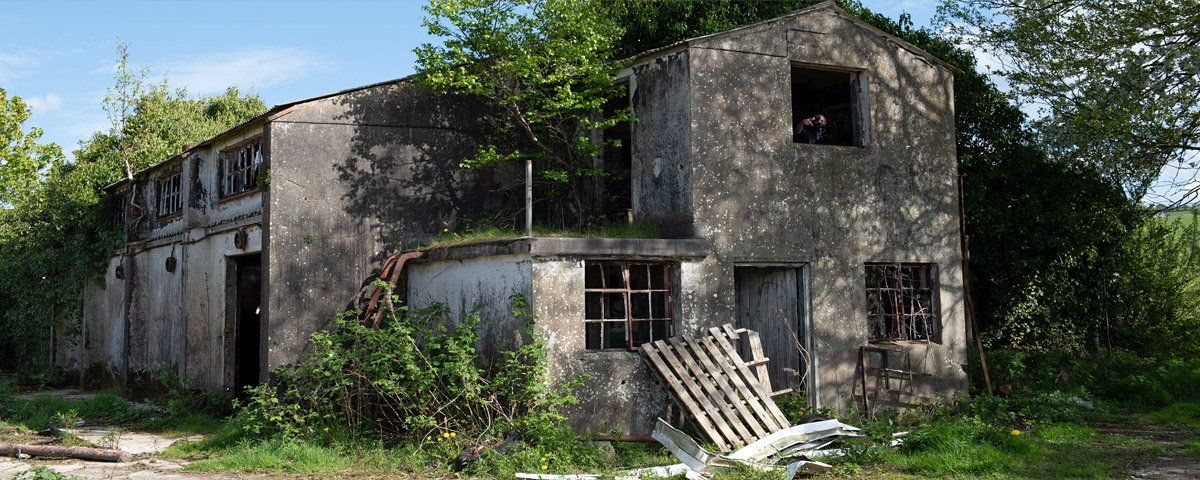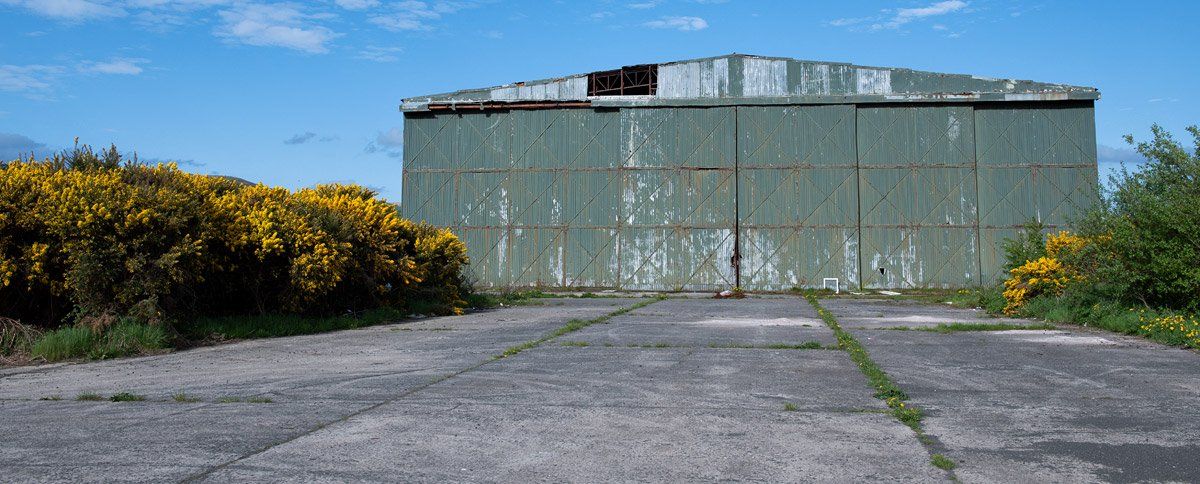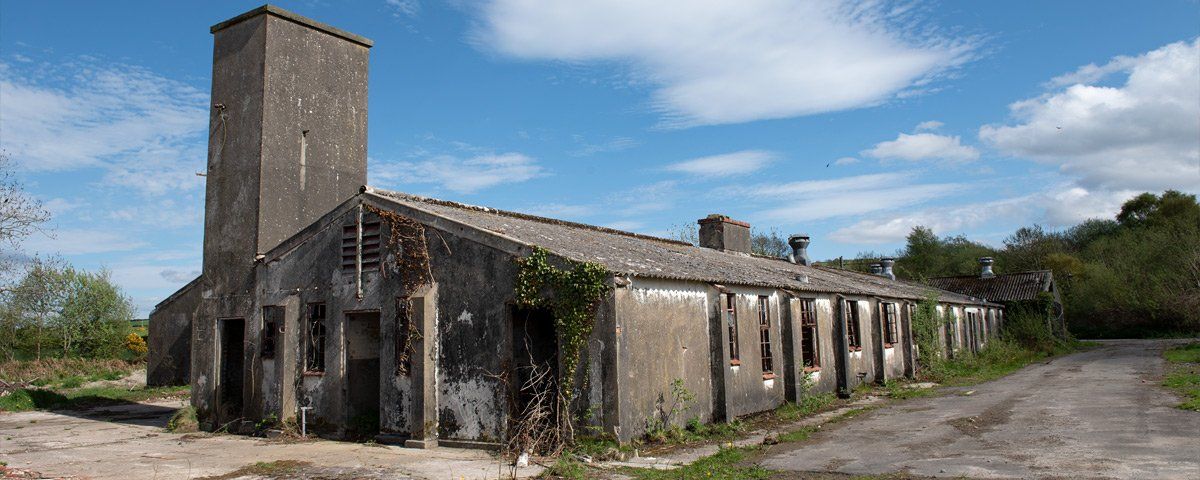Wartime Legacy
When you start to look around the landscape here you will start to notice many buildings which date back to the war years, including one collection close to the village which still has a network of concrete roads around numerous abandoned and overgrown buildings. Here you'll find billet huts, mess hall, briefing room, lookout towers, training halls and workshops. I just cannot understand why our local government has not moved to preserve and protect these important relics of our heritage. The area around Eglinton was first surveyed by the Airfields Board in 1940 after which the Royal Engineers moved in and construction began. People living in the immediate area were issued with special permits to cross the airfield.
This came about after the main runway and layout was built over existing country roads effectively cutting off the road that led to people's homes. Bases were also developed at Ballykelly, Aghanloo and Maydown (a satellite of Eglinton). Although flat and perfect on a clear day, the dangers in adverse weather is evident by the high loss of aircraft on surrounding hills. The airfield opened in April 1941 as a fighter base with Hurricanes of 504 Squadron to protect Londonderry. The next squadron that arrived here was the 133rd 'Eagle' Squadron which was made up of American aviators who had volunteered to join the RAF which had a shortage of pilots after the Battle of Britain.
This was before the United States had officially entered the war. Recruits were sent to England for basic induction before being assigned to the 133rd at Eglinton for operational training and convoy patrols. The squadron was based here from October 1941 to January 1942 before relocating to the south of England. Several 'Ace' pilots were associated with the 133rd squadron at Eglinton and others after they moved to England. A total of 244 Americans volunteered for active duty with the RAF and these made up the 71st, 121st and 133rd Squadrons. They were nicknamed the 'Eagle' and 'American Eagles' because the squadron was virtually all American and many had joined up for an adventure. The RAF policy at the time was to have English Squadrons and English flight commanders with the Eagle Squadrons.
This changed in September 1942 after the United States joined the war, the 'Eagle' squadrons were eventually incorporated into the USAAF (the 133rd became the 336th Fighter Squadron). The main role of RAF Eglinton was operational training and convoy escort, they also looked for and chased off long-range German FW 200 which were seeking convoy targets to relay to U Boats. During 1942, the 95th, 96th and 97th Fighter Squadrons were here with P-38 Lightnings which later moved on to the 12th USAAF in Algeria. In May 1943 the base was handed over to the Fleet Air Arm and became the first shore base unit for HMS Gannett. The base continued in is role training aircrew in anti-submarine warfare, carrier landing training and active convoy patrols.
It received Battle Honours for its part in the Battle of the Atlantic from 1943 to 1945. Another pilot who spent a short spell at Eglinton in 1943 was the 'Ace ' Hellcat pilot Stanly Orr who came here with the 804th Squadron, they transitioned from Sea Hurricanes to Hellcats at Eglington and trained hard for carrier landings before being moved on for a couple of carrier assignments in preparation for the raid on the German battleship, the Tirpitz. There are so many stories connected to the base through the lives of those who came here or had connections to the squadron that came here. One pilot of the 133rd squadron was Gordon Brettal, he joined the 'Eagles' in 1942 after they had moved to the south of England.
He was shot down and severely injured on a mission over France, after lengthy treatment in Paris he was sent to Stalag III. While here he escaped with another prisoner but both were recaptured and returned. Later he was selected as one of the prisoner's to take part in an escape plan (recounted in the film 'The Great Escape' starring Steve McQueen). He was again recaptured, and tragically along with fifty other servicemen, shot by the Gestapo. Hitler was furious about the scale of the breakout ordered that every one recaptured should be executed. Another 'Eagle' pilot from Eglinton, Don Gentile (Dominic Salvatore Gentile) went on to become an 'Ace', he was the first pilot to beat Eddie Rickenbacker's WWI record by shooting down 27 enemy planes.
President Roosevelt nicknamed him 'Captain Courageous' and Winston Churchill called him 'Damon' from Greek mythology. After the war he became a test pilot at Wright Field. He died in 1951 aged 30, when his T-33 'Shooting Star' trainer crashed. In 1995 he was inducted into the National Aviation Hall of Fame. After the war Eglinton continued as a Fleet Air Arm base until 1959 when it closed, part of the base reopened in 1960 as HMS Sea Eagle for helicopter use. It finally closed as a military base in 1966. The civil airport we see today started in 1978 and has grown since then. In 1994, after investment, the name of the airport was officially changed to the City of Derry Airport.







